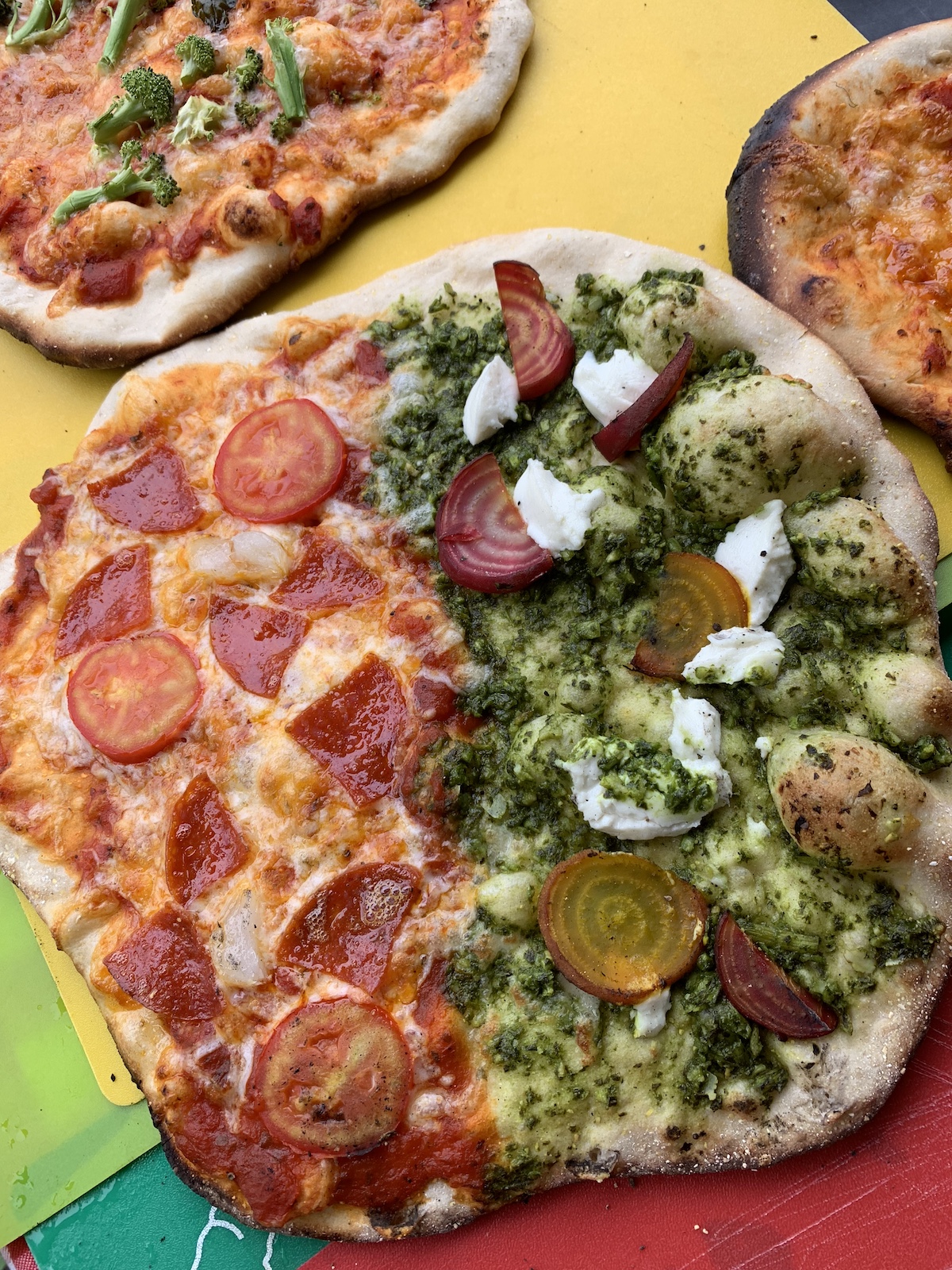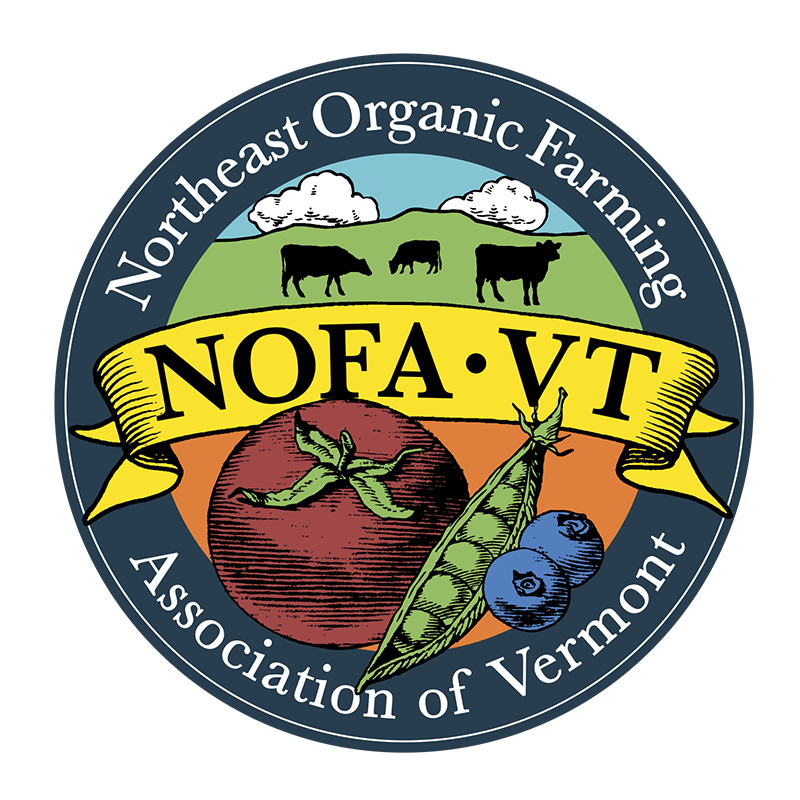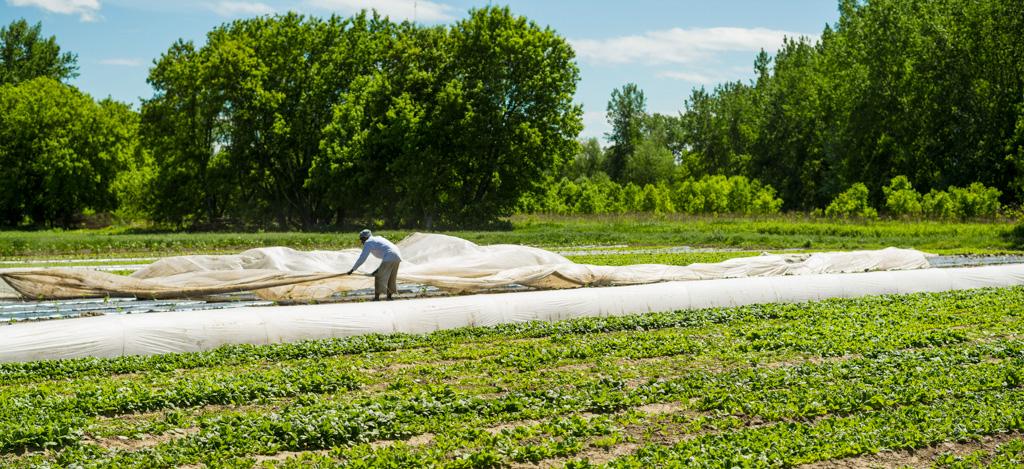Get these bi-weekly dispatches from farmers right in your inbox by subscribing to News From the Farm! This newsletter is written for kids and those who care for them.
September 12th, 2022
Dear Friend of NOFA-VT,
Happy September! It is full-on harvest season! School has begun, leaves are slowly starting to change color, and we begin to think about collecting our winter cache of food. One of our favorite ways to share the harvest and teach about farm to plate is through farm-fresh pizza! There is nothing better than harvesting all of the ingredients to make a wood-fired treat!
Do you ever think about how all of the ingredients on your pizza travel from the field to the plate? What type of wheat was grown and where? Was the wheat stone ground, factory ground, left fully intact or separated into white flour? What type of cows provided the milk for the cheese? How many different people were involved in creating the cheese? What type of animals were raised to make the pepperoni?
When we talk about food systems, we talk about the many different components that go into starting your food from a seed to your table. The many systems are an interconnected web, and with one missing piece, the whole system could fall apart. The plant life, soil, tools, factories, people, stores, and roadways are all steps in our daily eating. Can you chart out every single piece that goes into the pizza on your plate?
When you do take a mindful moment to think about the system that gets your pizza to your plate, pause, and thank the farmer, thank the seed saver, thank the factory worker, thanks the postal worker, thank the road crew, thank the engineer, and thank the grocery clerk.
Happy eating!
Misse Axelrod of Drift Farmstead
Recipe: Roasted Tomato Sauce
Note: Many local farms sell ‘sauce tomatoes’ for a discount, which are usually funky shapes or have minor cracks or blemishes. This is a great way to fill your freezer, support farmers, and have sauce to eat throughout the winter months!
 Ingredients:
Ingredients:
- 10 lbs of tomatoes
- 1 bunch of basil
- 1 bunch of parsley
- 1 bunch of oregano
- 1 onion
- 1 bulb of garlic
- Sea salt and pepper
Directions:
- Wash all ingredients
- Peel and slice onions and garlic
- Place all ingredients in oven dishes
- Slow roast at 250 degrees for 8 hours
- Place all ingredients in the blender together
- Fill container of choice (old yogurt tubs work well)
- Freeze until you're ready to use
Bonus Recipe: Tomato Sauce Base
Have extra tomatoes? Here's one way to store them for the fall and winter.
- Use any kind of tomato (cherry, paste, heirloom)
- Wash
- Place in a baking dish
- Place in 250-degree oven for 8 hours to slowly roast (I usually do this overnight)
- Blend whole tomato, skin, seed, and all in a food processor or immersion blender
- Fill yogurt type container and free
- When ready to use in the winter, thaw and use in soups, chili, etc.
Activity: Farm to Pizza
What are your favorite items to put on a pizza?! Don’t forget the wheat that makes the crust!
List your items: How long does it take to grow this item?
(think from seed to harvest)
Ex. Mushrooms____________________ _6 months_
_________________________________ _____________________
_________________________________ _____________________
_________________________________ _____________________
_________________________________ _____________________
_________________________________ _____________________
_________________________________ _____________________
Total Real Time: _____________________
Suggested Readings
- A True Book: Tomatoes
- A True Book: Wheat
- Extra Cheese, Please!
- Say Cheese! A Kid's Guide to Cheese Making
- The Little Red Hen (Makes a Pizza)
Ingredients in a Pizza—Where Do They Come From?
Wheat—A Grain
Pizza crust is made from wheat. When wheat is ready to harvest, the farmer combines the wheat, loads it onto trucks or wagons, and takes it to the county elevator. The county elevator then ships the wheat by truck, rail, or barge to a terminal. At the terminal, the wheat is sold to the various industries which make food and feed, or it is shipped overseas. The place where wheat is shipped to make food is called the mill. The mill breaks the wheat kernels into pieces and sifts the pieces to get the bran and germ (parts of the wheat kernels) out. This is repeated many times to make the substance we know as flour. The miller then adds B vitamins and iron for nutrients. The flour is shipped in bags to the bakery or grocery store. Bakers use wheat flour because it contains a magical protein called gluten. To make the crust, active yeast, warm water, and oil are added to the flour. The gluten traps the air bubbles the yeast releases and causes the crust to rise.
Tomato Sauce—A Vegetable
Tomato seeds require 75-85 days to develop into mature plants with ripe fruits. When the tomatoes are ripe enough to ship, they are carefully packed in boxes. The boxes are then loaded into semi-trailers for transporting to grocery stores. Some tomatoes are sent to a cannery where they are processed (cooked, squashed, preservatives added) to make sauces or ketchup.
Cheese—A Dairy Product
Cheese is a healthy, tasty food that is made from milk. The cows on the farm are milked by using suction cups to pump the milk from the cow into huge storage tanks. These storage tanks cool the milk until refrigerated tank trucks come to pick it up. The milk is then made into cheese. First, the
milk is heated and quickly cooled. This is called pasteurizing. Pasteurizing is a process that kills any harmful bacteria. The processed milk is then treated to form a soft, custard-like substance called curd. The curd contains a liquid called whey, which must be taken out through a special process before cheese can be made. Special knives cut the curd into thousands of small cubes, and the whey oozes from them. Heating and motion force more whey from the curd and the curd “ball” is then lifted from the vat. The “ball” is broken up into small pieces and put into presses that keep the cheese under great pressure for a few hours to a few days. During pressing more whey drains out, and the curd is shaped into blocks or wheels. After it is pressed, it is immediately wrapped in plastic. The cheese is then aged in cool storage rooms or warehouses. The aging times vary for different cheeses. Brick cheese and others need two months to age while Parmesan requires about a year. After being aged, the cheese is packaged in a wide variety of shapes and sizes.
Pepperoni & Sausage—Pork Products
Pigs go to market in only five to six months at the weight of 240-260 pounds. Pigs may be sold at an auction market or sale barn or may be bought directly by an order buyer who buys for a packer. Meat inspectors employed by the United States Department of Agriculture inspect live hogs, hog carcasses, and the entire packing plant to make sure that pork is safe to eat. The pork is ground up, and special seasonings are added to make sausage, salami, hot dogs, and pepperoni. About half of the pork produced in the United States is sold in supermarkets. The other half is eaten at restaurants, hospitals, schools, and business cafeterias. Yet, we get a lot more from pigs than pork—we also get insulin to treat human diabetes, and the skin from hogs is used to treat victims of severe burns. Other by-products are glue, glass, rubber, plastics, and heart valves.

